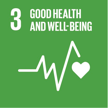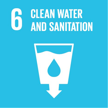About this project
While Malawi is relatively rich in water resources, having a number of large lakes, rivers and aquifers, there are critical issues affecting the country’s water supply (http://www.pumpaid.org/news/resources/malawis-water-challenge).
The inconvenient topography of Chisangano area contributes a major inhibiting factor to access clean water. A combination of poor agriculture practices and latrine sanitation has contributed to a staggering number of people susceptible to and reporting waterborne illness. More frequently, water is drawn from hand dug small holes in the dry water shed areas close to homestead areas. Through collaboration with the community l had several participatory meeting with the village health committees. The aim of the initial meetings was to hear the ideas across community demographics. The group discussions represented ideas from different age groups, gender groups, and covering several homestead areas and estates within the catchment’s area. The communities committed to working together with partner organizations and solving their complaints for clean water. There were three discussed solutions to the areas’ water problems. Drilled boreholes, Water harvesting tanks, Protected shallow wells. The proposed cost effective way forward as expressed by community members were the development of two protected shallow wells. The water problems discussed by the committee are related to both quality and scarcity. The 2 protected shallow wells will be constructed in a masonry style using the local materials to be provided by the community; fired burnt bricks, river sand and quarry stone to be installed with hand pumps. By not hiring an outside contractor and enable local community members to perform the work, an element of future ownership and management of the water point will be already created.
A flat surface will be created with the larger stones and will act as a base for the first brick work. Cement will be mixed (cement-sand) to ensure a structurally secure base at the point where water pressure will be greatest and entering the well.
At ground level a floor will be created for drainage and to prevent future water damage. Under the cement floor we will make sure to provide proper drainage with crushed quarry and sand. The cement cover will holds the mounted manual hand powered pump and acts as a preventive cover from sediments and debris.
Community by-laws will be initiated through the help of our local magistrate court so that every household should have a toilet, rubbish pit, drying lining, bath room, and dish lake. The community members themselves will agree on the type of the penalties to be paid by the defaulters. All the defaulters will be paying penalties which will go to the village sanitation committees. These penalties will help in repairing the protected shallow wells. The community by-laws will be re-enforced by the chiefs and village sanitation committees.
The sanitation and hygiene committees will be trained and be responsible to enforcement of the community by-laws with the support from the chiefs and maintenance of the protected shallow wells. Community members will be required to pay a small fee of less than half a euro monthly for using water from protected shallow wells. These monthly contribution will be collected by the two sanitation and hygiene committees and used for maintenance of the protected shallow wells for sustainability of the project.
Two sanitation and hygiene committees will be formed. Each committee will comprise of 10 members. Those who are able to read and write will be selected to be part of the committees. There will be 50% representation of each gender and youth in the sanitation and hygiene committees. The committee members will be trained in sanitation and hygiene practices and being able to reach out to community members with information on sanitation and hygiene.
There will be a vegetable garden close to each protected shallow well site to be owned by the sanitation and hygiene committees. The committee members will be responsible for taking care of the garden. They will be supported with watering canes and vegetable seeds throughout the project. The yields from the vegetable gardens will be shared amongst committee members themselves to use at their respective households contributing to their food security. Other yields will be sold as a group and the 60% of funds generated will be used to sustain the gardens through procurement of compost manure, vegetable seeds. 40% of the remaining funds will be shared among members to supports on their basic needs.
Community members will be reached with information on improved sanitation facilities and hygiene to reduce the outbreak of waterborne diseases through the sanitation and hygiene committees and education and awareness raising meetings.
Manual hand powered pump is preferred as it is easy for the community to use. It’s pipe can be adjusted in the future if water table shifts, it’s parts can be replaced after aging, wear and tear. Besides, its installation and maintenance does not require technical expertise.
Goals and Objectives
To increase access and utilization of clean water by 60% through constriction of two protected shallow well by August 2019.
To increase access and utilization of improved sanitary facilities by households through education and awareness on sanitation and hygiene practices, community by-laws by 60% by August 2019
To create community ownership and sustainability of the project within eight months.
Expected result
The 10 villages with a total population of 21,356 located along the Chisangano River in Traditional Authority Mthwalo Northern part of Mzimba District, in Northern Malawi have an advantage to vast customary lands for agriculture use and a protected forested area to supply fuel wood.
7000 people (4000 women and 3000 men) will benefit directly from the two shallow wells to be constructed. The other members will benefit indirectly through education and awareness raising meetings on hygiene and sanitation. These are the community members in the targeted community.
The project relates to COP 21 theme as it ensures accessibility of safe and clean water to vulnerable rural poor people.
The sanitation and hygiene committees will be trained and be responsible to enforcement of the community by-laws with the support from the chiefs and maintenance of the protected shallow wells. Community members will be required to pay a small fee of less than half a euro monthly for using water from protected shallow wells. These monthly contribution will be collected by the two sanitation and hygiene committees and used for maintenance of the protected shallow wells for sustainability of the project.
The committee members will be trained in sanitation and hygiene practices and being able to reach out to community members with information on sanitation and hygiene.
Sustainable Development Goals
About me / organisation
Hope for Relief-Malawi
Hope for relief in youth-led organisation operating in the northern Malawi (www.hope4reliefmw.org).
Website

